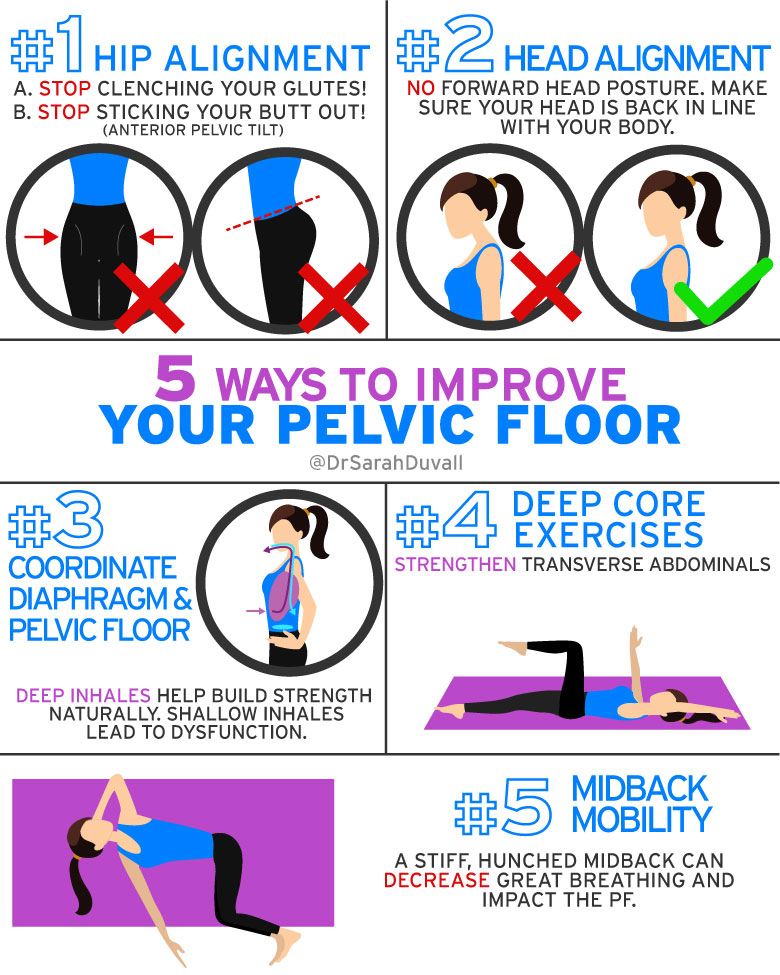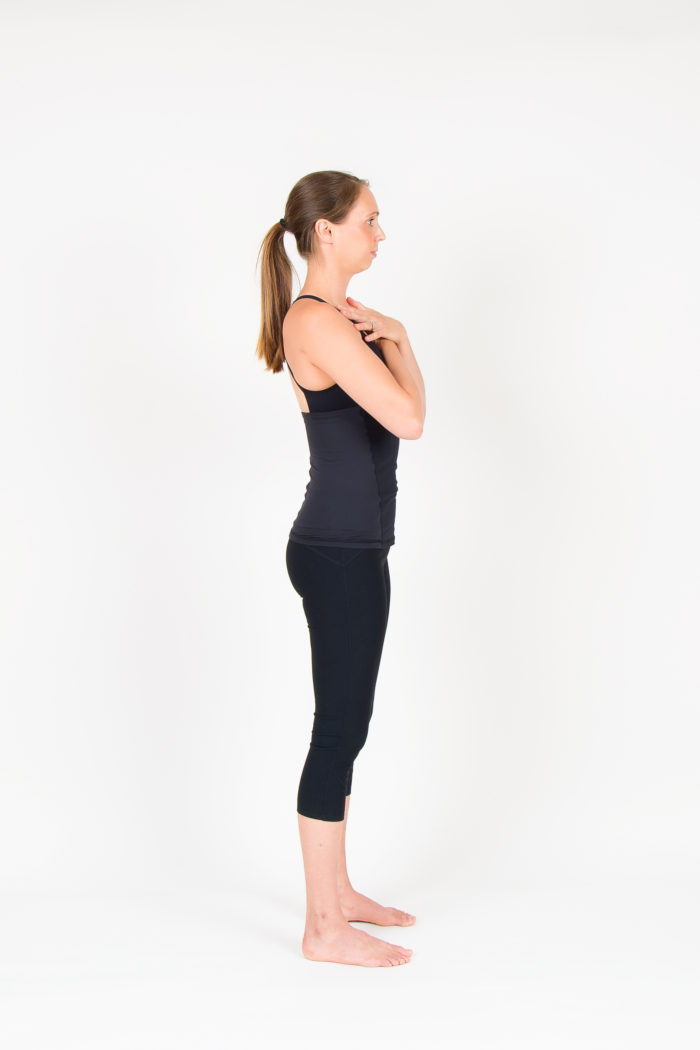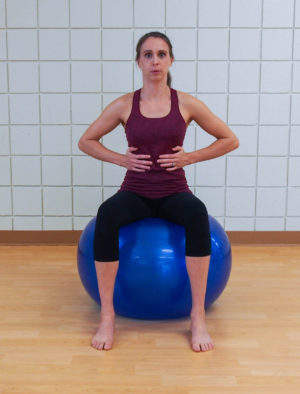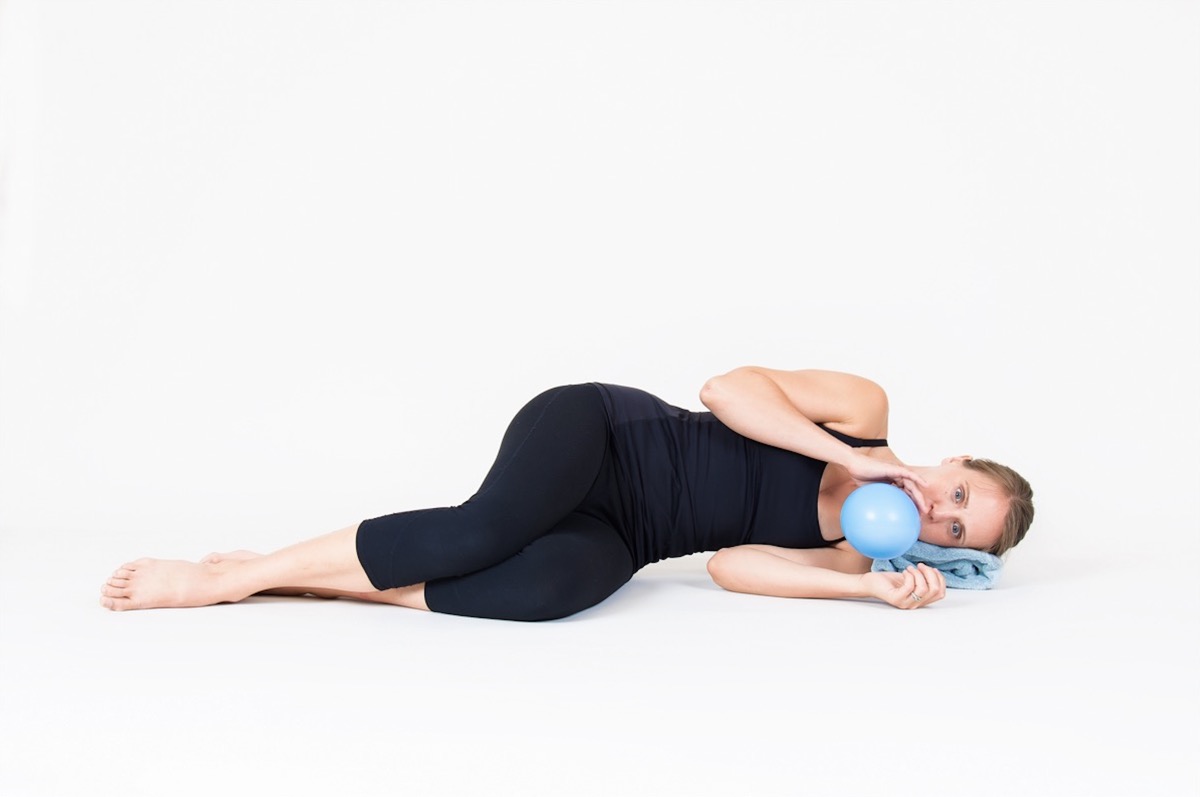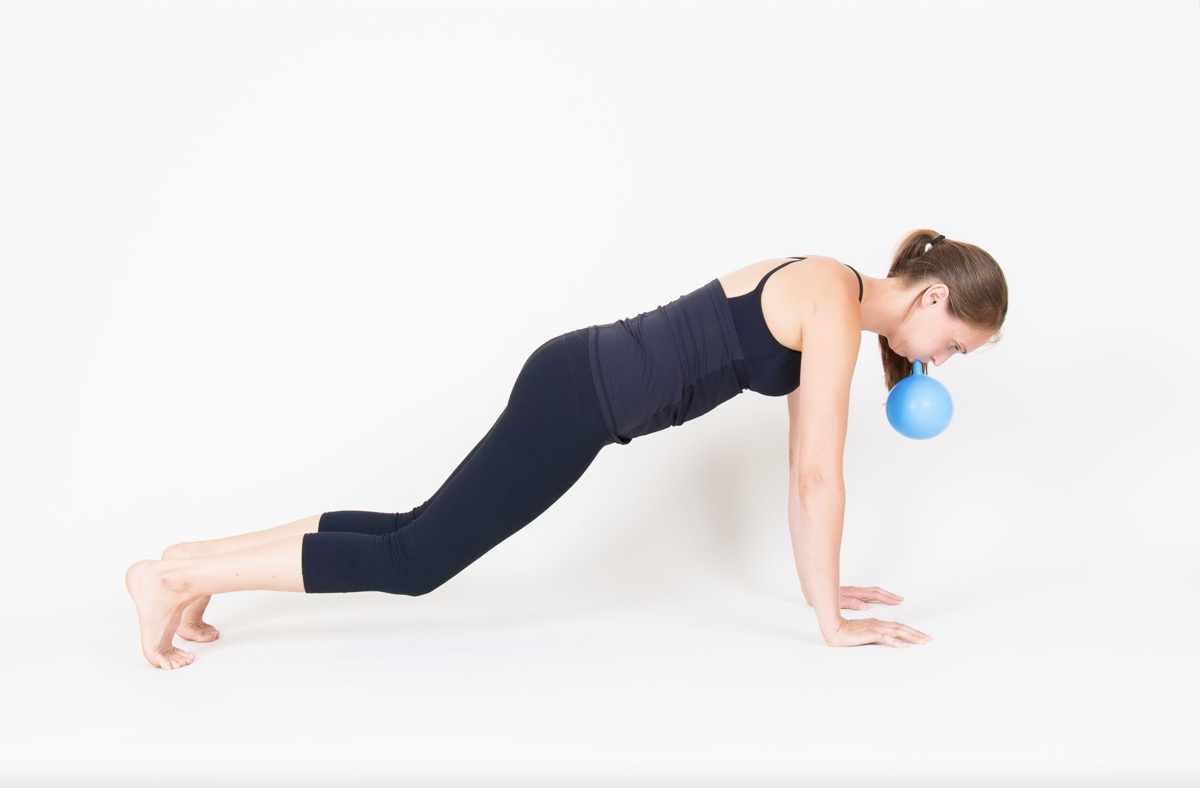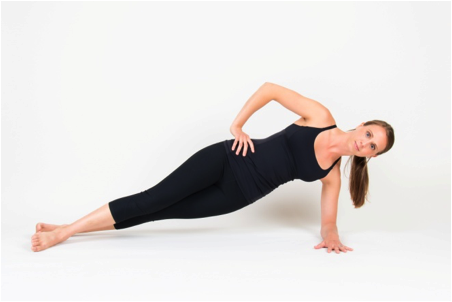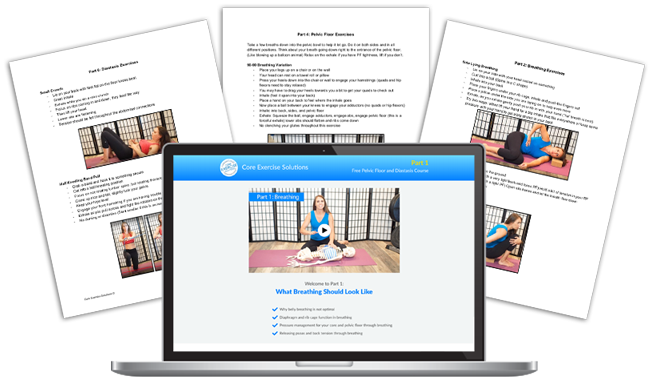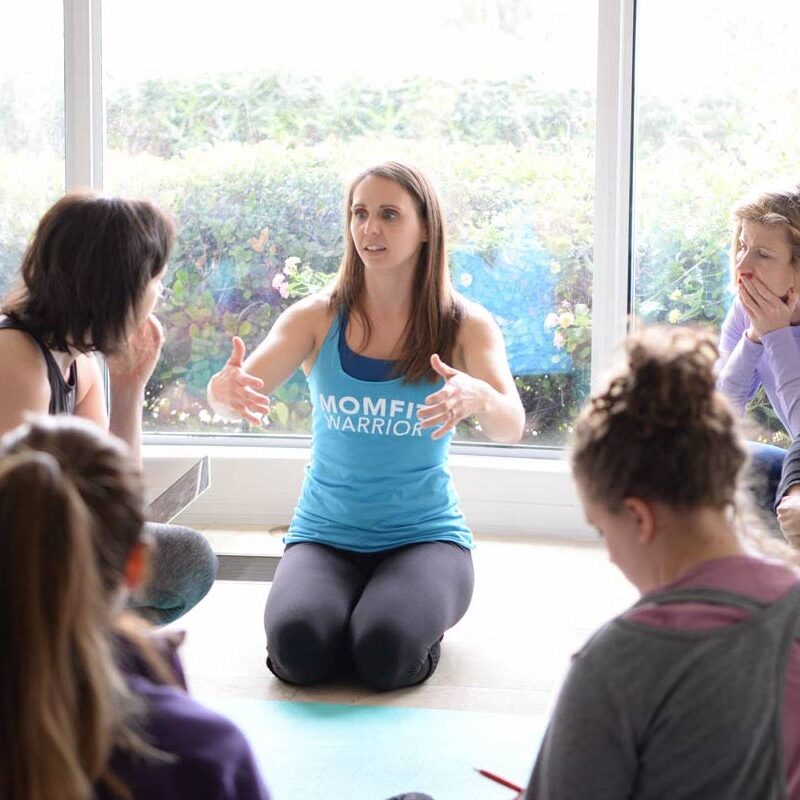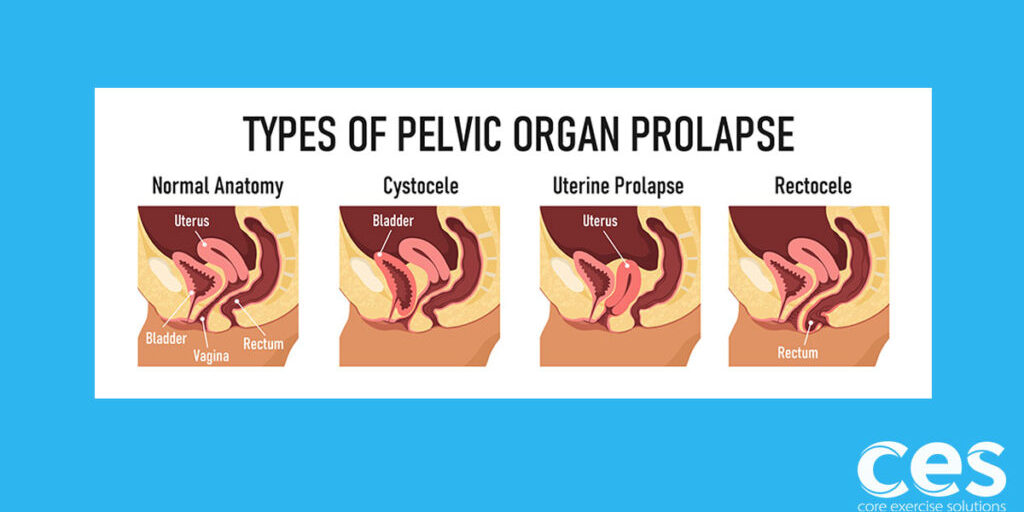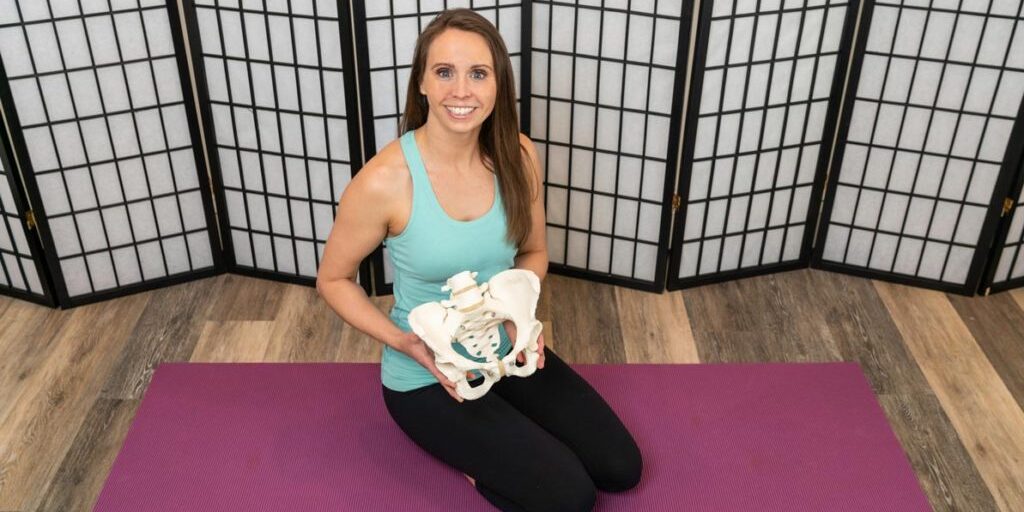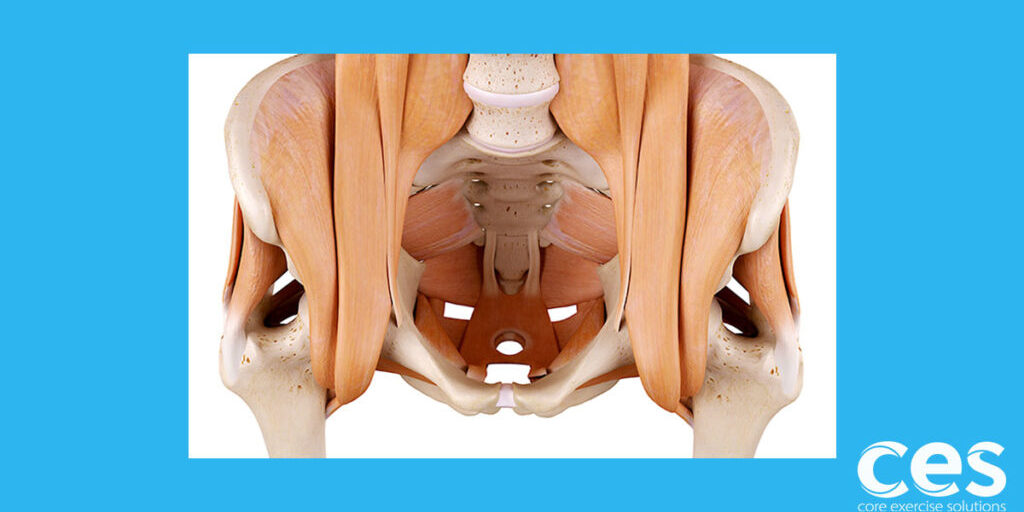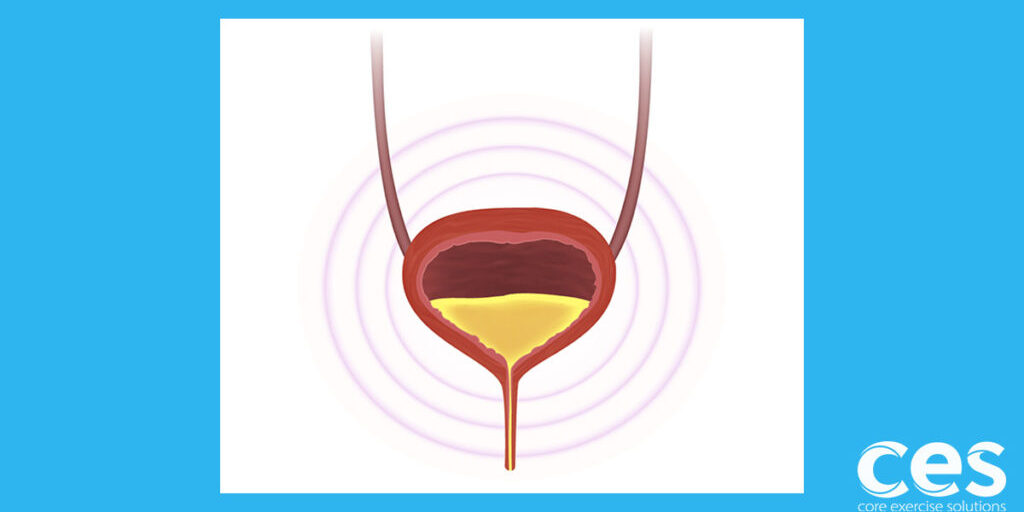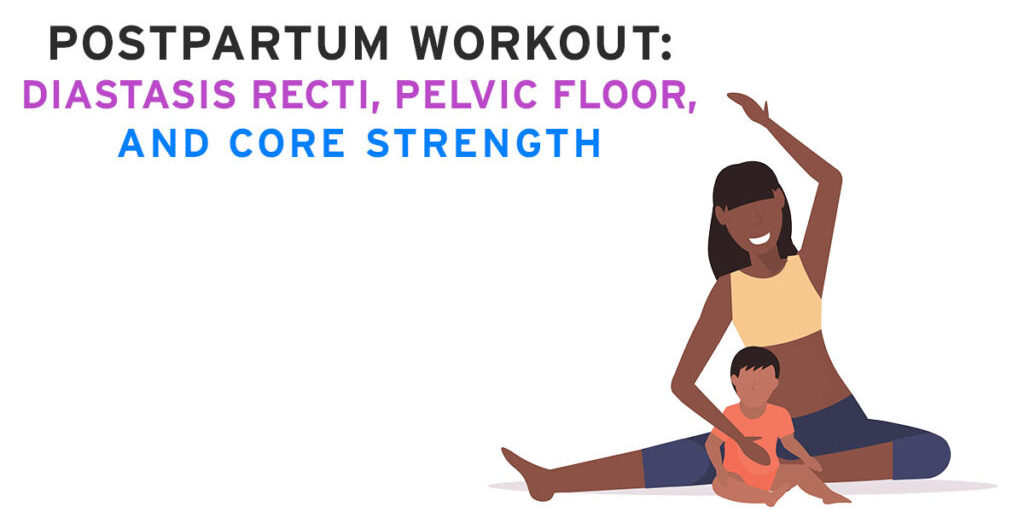Top 5 Pelvic Floor Exercises
Beyond the Basics
Dr. Sarah Ellis Duvall | Updated: Jul 29, 2019
Months after having a baby I noticed some pelvic floor weakness. What the heck? I'm a physical therapist, so I expect my body to be strong, everywhere! So, that got my professional gears turning and I turned all my focus to the pelvic floor. I found that doing kegels did not make any real difference in my pelvic floor strength, so I had to dig deeper. The more I focused on how the rest of the body either encouraged the pelvic floor to work or discouraged I got stronger, fast. Then, I applied everything at work! The feedback I got from my clients was amazing. It even amazed me.
Fast forward 6 years and I've not only helped 1,000s of women with prolapse, leaking and pelvic floor pain and tightness but also provided cutting edge education to over 900 professionals so they can better help women overcome pelvic floor issues.
Ready for a stronger pelvic floor?
Early on in my pelvic floor journey, a client mentioned to me at the end of the session that she felt like she had to pee frequently and could barely make it to the bathroom. I gave her one exercise (a hip rotation exercise) and she emailed me later that evening to say her pelvic floor issue was 100% fixed. Wow! It's stories like that, that make me want to scream from the hilltops "pelvic floor strength is more than kegels!" So, I'm not stopping until every woman has heard this great information.
Below I've listed 5 really great areas for building pelvic floor strength, beyond kegels!
Please keep in mind, these are for people suffering from mild sneeze-pee issues or simply don't trust their pelvic floor to hold when placed under stress, like running or jumping. If you have prolapse or pelvic pain, these are probably a bit advanced to start with, but just because these are advanced, it doesn't mean you won't gain some valuable knowledge from reading below!
Let's dig a little deeper...
Your pelvic floor is the base of function for your body. Literally, your base! Think about it as a sling of muscles that your torso sits in. You don't have to be having incontinence issues to need pelvic floor strength. A weak or tight pelvic floor can cause SI joint pain, low back and hip pain.
Ready to strengthen your pelvic floor by doing something other than kegels?
Doing a kegel (consciously drawing up your pelvic floor) works when you are thinking about it, but most pelvic floor issues happen when you're not thinking about it. How do you prepare for an unexpected sneeze, a spontaneous laugh, or that sudden lunge for a tennis ball?
Trust Your Pelvic Floor Again
Strengthening- Beyond Kegels
#1. Hip Alignment: Perfect Posture for the Pelvic Floor
Somewhere along the way I read that great posture burns around 300 calories a day (the same as a 3 mile run). I'm not surprised; it's hard work! So, that's why I'm calling alignment an exercise for the pelvic floor. Great alignment places the pelvis at the best angle to support the entire abdominal wall and pelvic floor. This angle makes it easier for the pelvic floor to fire naturally and thus get stronger.
The Two Biggest Posture Mistakes that Hinder Pelvic Floor Strength
1. Clenching your glutes while standing.
A strong Glute Max is important for everything, but in order to be strong it cannot be clenched all day. Clenching the glutes can make them weaker and harder for your pelvic floor to respond when you really need it!
You know when you are in an elevator and oh no, you had beans last night for dinner and you squeeze your bottom to hold in gas? Oh, so embarrassing! For a short elevator ride holding those glutes clenched is ok but holding them clenched all day creates a real problem, especially for sneeze pee. When you clench, it tucks your butt under. This makes it hard for the front of the pelvic floor to contract and it's the front of the pelvic floor that we need to stop the leak of urine or lift front prolapse! Clenching your glutes will often make you clench your pelvic floor as well, which makes it ineffective at dealing with stresses, such as sneezing, it forces the pelvic floor muscles into a shortened, tightened position. My last-ditch argument against clenching is it makes your butt look super flat and no woman wants flat butt syndrome.
Usually, glute clenching is unconscious and you don't even realize you are doing it.
Take the test now to find out if you are a glute clencher!
2. Anterior Pelvic Tilt
Too much junk in the trunk. Big, strong glutes are awesome, but sometimes a large pelvic anterior tilt (sticking your butt out too much) makes you look like you have glutes when you really don't. I call these fake glutes, like those jeans with built in padding. Hanging into an anterior tilt can decrease abdominal strength and make you look like you have a belly, when you don't. This is bad because the pelvic floor works in sync with the abdominals to fire correctly.
Check out the post Hanging into an Anterior Tilt for more information.
Both of these mistakes make it difficult for the pelvic floor to fire correctly. They also make traditional pelvic floor strengthening exercises less effective.
Good Posture is the Best Exercise to Strengthen the Pelvic Floor All Day Long! So, they can be effective all night long. (Can't believe I just said that out-loud, but the truth is we all want to be more than moms, we want to be sexy women too! Nothing wrong with that.)
#2. Check Your Head Alignment
To strengthen your pelvic floor be sure your head is back in line with your body. Those with forward head posture are more likely to have pelvic floor issues. (Crazy to think your head alignment can have an effect on incontinence and prolapse.)
Take a look at the picture. When my head is forward, my shoulders are slouched and it looks bad. When my chin is tucked, it looks awesome! When you tuck your chin, it aligns your entire spine, this includes your pelvic floor since it's the base of your spine. Proper alignment promotes strength! I'm not even going to get started about how tucking your chin can alleviate neck, shoulder, midback and lower back pain.
Alignment Check: Get someone to take a picture of you from the side. If you hang a plumb line down from your ear, does it hit your ankle or toes? Your head should be in line with your ankles. Tuck your chin to help your pelvic floor, and as an added bonus, you will look confident and radiant in all your pictures!
#3. Make Breathing Part of Your Pelvic Floor
To make breathing a pelvic floor exercise, make sure the diaphragm and pelvic floor are coordinating with each other. The biggest issue I see is flared ribs that don't move with each breath.
More on this in the pelvic floor workout series, but for a simple quick check, have a seat, preferably on an exercise ball. Now take a deep breath in and let it relax out. Repeat until you feel pressure in your pelvic floor created by your diaphragm functioning properly. The more you expand your ribcage on each deep breath, the more likely you are to have a fully functioning diaphragm. Can't feel it? Don't worry! This is fixable.
All you need to remember is that when the diaphragm expands, it pushes pressure down into the pelvic floor. This is a good thing! When you slip into a shallow breathing pattern, hello forward head, you lose your diaphragm and therefore your natural strengthening of the pelvic floor.
Balloons = Diaphragm Weight Lifting
Try this simple exercise. Lying on your side slightly round your back into a C shape and tuck your chin. (This makes sure your paraspinals don't do all the work.) Keeping your chin tucked, blow up the balloon. In through your nose and out through your mouth. (You do not need to take the balloon out for each breath or pinch it with your fingers.)
**If you have prolapse, do not blow up a balloon unless you're 100% sure your diaphragm is coordinating with your pelvic floor and you have learned how to regulate intra-abdominal pressure without bearing down. We will cover this thoroughly in our Continuing Education Course for the Pelvic Floor.
The diaphragm is a huge muscle that expands up and down to help fill the lungs with air. Think of the abdominal wall again as a canister of pressure. This pressure helps the diaphragm work. The pelvic floor is the bottom of the pressure canister. When you inhale, your diaphragm should drop or descend, and your ribs should expand like an umbrella to allow room for air to fill your lungs. This should also cause your pelvic floor to relax or expand down, making room for the downward pressure of the diaphragm. Then, as you exhale, the diaphragm ascends back up. Think of it as a recoil from all the pressure going down and your pelvic floor should follow by contracting. That's why proper alignment is so important, it sets up this system to work efficiently!
Just for fun, try this advanced pelvic floor exercise! *Do not do if you have diastasis recti!
Start on your hands and knees. Engaging your core, lift up to your toes. Without dropping your head or letting your back arch, come forward and try to blow up the balloon.
It will be the hardest core exercise ever! Just make sure you don't let your lower back arch (drop).
Free Pelvic Floor Educational Series
Dr. Sarah Duvall, PT, DPT, CPT and the CES Team have helped thousands of women create the strength and stability needed to overcome common and not-so-common pelvic floor issues.
Join us today for this 4-part Pelvic Floor Video Series, absolutely free.
We don't spam or give your information to any third parties. View our Terms of Use and Privacy Policy.
Having trouble signing up? Click here

#4. Exercise Your Core
Get your deep abdominal muscles to fire properly to support the pelvic floor. This includes starting with the basics, then building up in a safe, progressive manner. It's important to make sure all the right muscles are firing before advancing to harder exercises. Also, make sure your core program includes hip rotational exercises that link the abdominal wall.Tapping into this chain of muscles builds optimal strength in the core and pelvic floor. (This, too, will be in the pelvic floor workout series.)
Key mistake: Overworking the outer core muscles (external obliques) without creating proper pelvic floor strength to back it up can create too much pressure down on the pelvic floor.
#5. Kyphosis Exercises
Studies show that an increase in the curve of the midback (kyphosis) and decrease of the lumbar curve is a risk factor for incontinence and prolapse. When we think of Depends, we think of a hunched over old person, but I actually see tons of younger women with poor posture. Having that increased midback slouch and decreased lumbar curve is not something we can get rid of overnight, which is why it's important to start preventing it today (or maybe I should say prevent the purchase of depends...).
My favorite kyphosis prevention exercise: stretch over a foam roller. Try this exercise now to help decrease kyphosis (humpback posture) and improve your pelvic floor. Plus, it feels great after a long day at the office!
My favorite lumbar curve correction exercise is a squat. Check that out in the video below. One final hip discussion is that the pelvic floor needs hip rotation and glute strength to function properly.
Check Out My Past Post For more Posture Exercises: 3 Tips for Great Posture
Now, on to Kegels.
Yes, you do need a strong pelvic floor! BUT, kegels alone do not build a strong system. What does a kegel look like? A common explanation is a tightening of the pelvic floor like you are stopping the flow of urine.
The most important part of doing a kegel is relaxing after the contracting. Fully letting go of your pelvic floor is critical for getting a great contraction. If you hold a low level of contraction all the time, you get weaker and can never fully contract your pelvic floor. This is what causes leaks. Focus on both the contraction phase and the releasing phase, but your best bet is to incorporate them into other exercises focusing on diaphragm timing.
As I mentioned above, kegels by themselves may not fix your pelvic floor issues, nor do I think they are the best line of defense for building optimal pelvic floor strength but you do need these muscles strong. A great example of this is needing a strong dynamic shoulder to put luggage in the overhead bin and you only work on your grip strength. Sure you need to be able to grip the luggage but then what? You need to work your arm, shoulder and upper back muscles to be able to get that heavy bag all the way over your head. The pelvic floor is no different. Working on kegels is like working on grip strength. You need some grip strength, sure -- but you also need a whole lot more!
On the flip side. Some people have too much gripping strength (or tone as we call it in the PT world) and their pelvic floors are tight all the time. This is bad because if a muscle cannot relax or lengthen properly, it cannot properly contract. Think of winding up to throw a ball. If you never had the wind-up, you wouldn't be able to throw it very hard. The bottom line is the pelvic floor needs to be able to relax and contract in timing with the structures around it.
How can the rest of the body affect the pelvic floor?
Our body is an integrated system, with everything working in response to everything else. One of the big ways I've seen this chain reaction is ankle injuries. Stiffness in the ankle, preventing proper ankle rotation, keeps the hip from rotating properly. Hip rotation is key for pelvic floor function because the hip muscles help tell the pelvic floor to fire. Have you seen a pregnant woman walk from the back? Yep, they waddle. This waddle has almost no hip rotation. Coincidence? I think not. Our bodies are more dynamic and complicated than we often give them credit for, and if it were as simple as just doing a kegel, there would be a lot of women and men right now without incontinence issues.
Health or Fitness Professional?
FREE Pelvic Floor and Diastasis Course
This 6-part course offers key takeaways on breathing, pelvic floor strengthening and diastasis recovery. Sign up and start learning today!
About The Author:
Dr. Sarah Ellis Duvall, PT, DPT, CPT, CNC
As a mother of two, Sarah knows what it takes to fully recover from having a baby and her passion lies in helping women be stronger after baby.
She has rehabbed thousands of women with prolapse, leaking, pelvic floor pain and tightness. She also provides cutting-edge education for health and wellness professionals so they can better help women overcome pelvic floor issues.
Related Articles
- « Previous
- 1
- …
- 3
- 4
- 5

